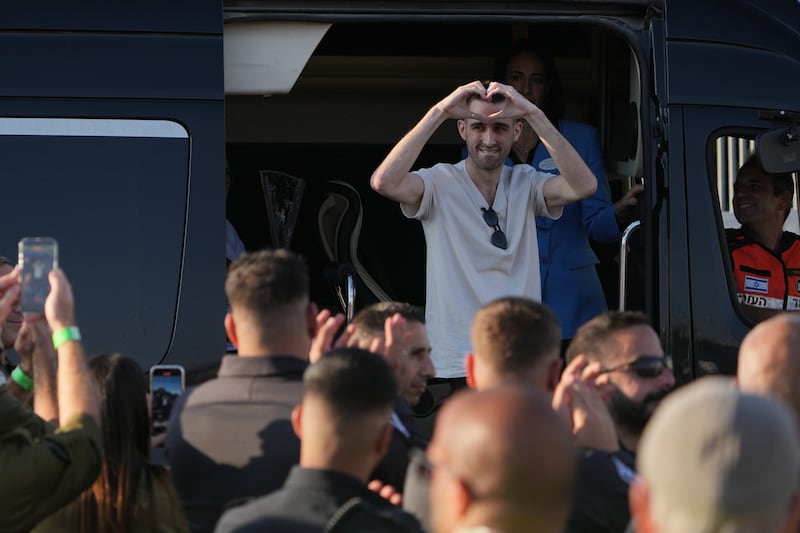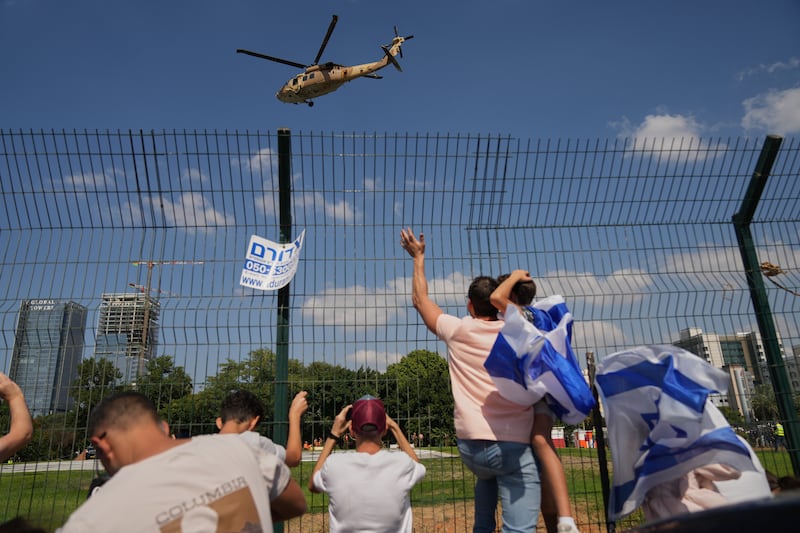These lines are written hours after 20 Israeli hostages were reunited with their families, while other families await the return of the remains of loved ones killed either on Oct. 7, 2023, or while held hostage by Hamas.
In the same vein, Gazan families eagerly await the return of their family members, released from Israeli jails as part of the ceasefire agreement imposed on the parties by President Donald Trump.
The word “imposed” is not used casually.
It reflects the reality.
In particular, Trump gave Israeli Prime Minister Benjamin Netanyahu no wiggle room, having well learned the latter’s propensity for not honoring agreements and casting aside promises and guarantees.
I write this as an Israeli who has been a Netanyahu observer for over three decades, engaged in writing a book about those who enable his conduct. That is one of the two backdrops to my perspective.
The second is that from 1994 to 1999, while serving in the Israel Defense Forces Judge Advocate General Corps, I was deeply engaged in negotiating implementation of the Oslo Accords and for 10 years involved in Track II discussions with Israelis and Palestinians seeking to propose a different path forward to resolve the seemingly intractable Israeli-Palestinian conflict.
It is to that, then, that we turn our attention.
The talking points below reflect both my experience and understanding of the proposed process moving forward defined as Stage Two. The inevitable challenge in the undertaking is that Stage One has yet to be completed as Hamas has yet to return the bodies of the murdered hostages. The extent to which that impacts moving forward is an open question.
Difficult questions ahead
Nevertheless, with the understanding that hurdles and challenges are inherent to the process, the questions below are suggested as an outline of issues that will demand attention in the days, weeks and months ahead.

What entity will assume control of the Gaza Strip?
Is the establishment of a Palestinian state the final goal?
Given the deep enmity between the Palestinian Authority (which governed the Gaza Strip from 1994 until defeated by Hamas in an election in 2006) and Palestinians living in the Gaza Strip, what would be the configuration of a future Palestinian state?
Will Hamas be involved and/or disarmed?
What is the extent of Trump’s personal commitment to what will be a long, drawn-out process?
What will be the role of Middle East countries, particularly Qatar, Egypt and Turkey?
What will be the role of the international “board” ostensibly headed by Trump with the involvement of former British Prime Minister Tony Blair?
What will be the extent of Israeli withdrawal from the Gaza Strip?
What will be the reaction if extremist, right-wing Israelis seek to reestablish Jewish settlements in the Gaza Strip?
What, if anything, will be the role of Netanyahu in this undertaking (As an example, President Recep Erdoğan of Turkey objected to Netanyahu’s presence in the Trump-led conference held Monday, an objection Trump did not overrule.) How will the extreme right-wing parties in his coalition react to various proposals if Israel is involved?
How will the Israel Defense Forces react to potential acts of terrorism initiated by Hamas or other terrorist organizations in the Gaza Strip?
What international force will enforce the ceasefire and what will be the rules of engagement?
Who will finance the enormous reconstruction required in the Gaza Strip?
Who will assume responsibility for humanitarian assistance for the civilian Gazan population?

Deep challenges
The years I was involved taught me critical lessons. The following is not intended as the “Ten Commandments” but rather represent the deep challenges relevant to the points above as the process begins:
- While the involvement of outside parties is, seemingly, inevitable that is not cost-free because at the end of the day, the local entities need to resolve the conflict
- Violence is all but inevitable therefore there is a need to condemn and demand accountability but also not give in to terrorism.
- Political theater is inevitable and needs to be tolerated.
- Basic terminology needs to be agreed upon in advance.
- Crisis management ground rules and means of resolving conflicts must be agreed upon in advance with recognition that flexibility is essential
- There are no winners and losers as this is not a “zero sum” undertaking
- Outside experts have limited benefit as they are not “local”
- Establishing a final goal is legitimate with recognition fluidity may be necessary
- A common language (spoken and writing) needs to be agreed upon in advance
- Ground rules regarding interaction with media are essential
The process will be long, hard and complicated. But as Trump has made clear, there is no time like now.


